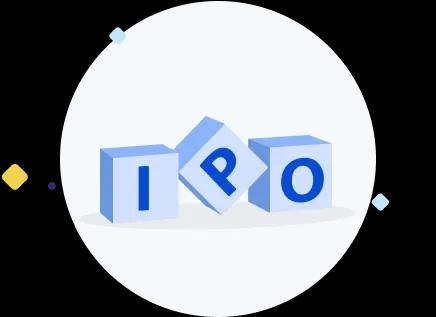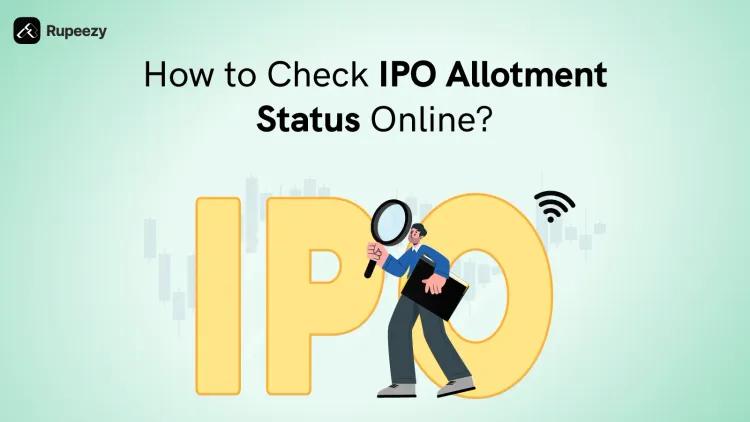What is Cut-off Price in IPO - Meaning and Example


00:00 / 00:00
IPO brings in a whole new level of excitement. People who apply for the IPO not only wait for the allotment but also hope to get good returns after listing. However, among all these, there is a term that you may see multiple times. It is the cut-off price in IPO.
But the question here is what is cut-off price in IPO? Does it impact your allotment or share valuations? For many investors, this may sound technical, and hence, most people tend to ignore it. However, the reality is that this is very important for you. Let's explore every minute detail related to the cut-off price in this guide.
What is Cut-off Price in IPO?
The cut-off price in IPO means the final price at which shares are allotted to investors in an IPO. It is determined during the book-building process based on demand within a specified price band. It is the highest price within the band where total investor demand matches or exceeds the shares offered, ensuring full subscription.
Retail investors can opt for the "cut-off price" option, agreeing to pay the final price decided, which increases their chances of allotment. The primary features of the same are as follows:
Demand-Driven: The cut-off price is determined by analyzing all bids received during the IPO subscription period, reflecting actual investor demand.
Single Price: All investors who are allotted shares receive them at the same cut-off price, regardless of whether they bid higher.
Retail Investor Advantage: Retail investors can choose a "cut-off price" option, agreeing to pay whatever the final price is. This increases their chances of getting an allotment.
Full Subscription: The cut-off price is the single final price at which all shares being offered in the IPO can be sold.
Price Band: SEBI requires a minimum 20% difference between the floor and cap prices.
Transparency: SEBI mandates disclosure of subscription details during the bidding period.
Real Example of Cut-off Price
Zomato is one of India’s leading food delivery platforms. In 2021, it launched its Initial Public Offering (IPO) to raise capital from the public and become a publicly listed company. The IPO attracted significant attention from investors due to the company’s rapid growth and market potential.
Price Band: Rs. 72 to Rs. 76 per share
Total Shares Offered: Approximately 13 crore shares
Subscription Period: July 14–16, 2021
Subscription Level: Oversubscribed 38 times overall
Bidding Options: Investors could bid at any price within the band or select the “cut-off price” option, agreeing to pay the final price decided after bidding closes.
Result (Cut-off Price and Listing)
The cut-off price was set at the upper end of the band, Rs. 76 per share, as the demand at this price exceeded the number of shares offered.
All investors who bid Rs. 76 or chose the cut-off price were allotted shares at Rs. 76. Bids below Rs. 76 were rejected.
On listing day, Zomato’s shares opened at around Rs. 116 on the stock exchange, which was about 52% higher than the cut-off price.
This meant that investors who bought shares at Rs. 76 made an immediate profit when the shares began trading publicly.
Why This Case Matters
The cut-off price mechanism allowed the company to price its shares based on real investor demand.
Retail investors benefited by choosing the cut-off price option, avoiding guesswork on the final price.
The strong listing gain showed the market’s positive sentiment towards Zomato’s future prospects.
How to Apply at the Cut-off Price
With this, you know what IPO at cut-off price means. But the question now comes to applying. So, as an investor, you must know how to apply at the cut-off price. This is important as this will increase your chances of allotment too. So, the steps that you would need to follow to apply for IPO are:
Step 1: Start by logging into your demat account. Once you have done that, go to the section where you can find the IPO details.
Step 2: Now, you need to select any current IPO based on your analysis and start filling out the application. When the price is asked, choose the cut-off price option in the application. This is very important, as it ensures you are applying at the right price.
Step 3: Enter the number of lots you want to apply for. The lot size is specified in the IPO details (for example, 50 shares per lot).
Step 4: Funds will be blocked in your bank account for the maximum price in the price band (e.g., if the price band is Rs. 100–Rs. 120 and you apply for 1 lot of 50 shares, Rs. 6,000 will be blocked). This is done through the ASBA (Application Supported by Blocked Amount) mechanism, ensuring money is only debited if shares are allotted.
Step 5: After the IPO closes, the cut-off price is announced. If it is lower than the upper band price, you pay the cut-off price multiplied by the number of shares allotted. The difference between the blocked amount and the actual payment is refunded to your bank account automatically within a few days.
This way, the IPO application and allotment at the cut-off price will work for you.
Factors Impacting the Cut-off Price in IPO
While you are applying for the cut-off price in IPO, you must be wondering what factors impact this. Well, various factors impact the cut-off price. The most important ones are discussed below:
1. Investor Demand
The overall subscription levels, especially from Qualified Institutional Buyers (QIBs), drive the cut-off price. High demand often leads to a cut-off price at the upper end of the band. Low or mixed demand may pull the cut-off lower. The bidding trends are a direct signal of perceived value.
2. Price Band Set by the Company
The initial price band reflects the company’s valuation expectations. A narrow band gives less room for investor input, while a wider band allows more flexibility. The final cut-off price must fall within this band, making it a key boundary in the price discovery process.
3. Market Sentiment
Bullish markets encourage investors to bid aggressively, pushing the cut-off higher. Bearish or volatile markets make investors more cautious, resulting in conservative bids. The prevailing market tone during the IPO window significantly affects the bidding behavior and thus the cut-off price.
4. Company Fundamentals
Strong financials, consistent revenue growth, profitability, and a promising business model improve investor confidence. When fundamentals are solid, investors are more willing to bid at higher prices, which often reflects in a higher cut-off price.
5. Peer Valuation and Sector Outlook
Investors compare the IPO valuation with listed peers. If the IPO is seen as undervalued compared to similar companies, bids tend to be higher. Sector performance also plays a role—a booming industry can justify a higher cut-off price due to better future expectations.
6. Anchor Investor Response
Anchor investors include institutions that commit funds before the IPO opens. Strong anchor participation signals confidence in the offer and usually encourages others to bid at higher levels. This early interest can help drive up the cut-off price.
7. Grey Market Premium (GMP)
Though unofficial, GMP reflects investor expectations of listing gains. A high GMP often creates buzz and pushes investors to bid at the upper end of the price band, which can directly influence the final cut-off price.
8. IPO Size and Offer Structure
The size of the IPO and how much is reserved for different investor categories matters. Smaller issues with limited supply and high demand can drive prices up. If a large portion is reserved for institutional buyers, their bids carry more weight in setting the price.
9. Company Reputation and Promoter Track Record
A known brand, ethical promoter group, or a company backed by strong investors draws more confidence. If the management has a solid track record, investors are more willing to bid high, impacting the cut-off price positively.
10. Use of Proceeds and Future Plans
Where the company plans to use the IPO funds matters to investors. Clear, growth-oriented objectives like expansion, technology upgrades, or debt reduction attract more serious bids. Vague or unclear plans may lead to conservative bidding, affecting the cut-off price.
Benefits of Bidding at the Cut-off Price
When participating in an IPO, deciding the right price to bid can be challenging. The cut-off price option offers a smart solution by letting investors avoid the guesswork involved in predicting the final share price. But there are other benefits as well that you enjoy when bidding at the cut-off price. So, here are the ones to know:
1. Higher Chances of Allotment
In oversubscribed IPOs, shares are often allotted preferentially to those who bid at the cut-off price. If you want to increase your IPO allotment chances, choosing the cut-off price significantly helps, as your application is prioritized over bids placed at lower prices within the band.
2. Eliminates Price Guesswork
Instead of trying to predict the final price, you simply agree to pay whatever price the market settles on. This removes the stress and uncertainty of bidding too high or too low.
3. Refund of Excess Funds
Although your funds are blocked at the highest price in the band, you only pay the final cut-off price. If the cut-off price is lower, the difference is automatically refunded to your bank account, ensuring you never overpay.
4. Fair and Transparent Pricing
All investors who bid at or above the cut-off price receive shares at the same final price. This uniform pricing maintains fairness and transparency in the allotment process.
5. Regulatory Safeguards for Retail Investors
SEBI mandates that at least 35% of shares in an IPO are reserved for retail investors applying at the cut-off price. This ensures meaningful participation and protection for small investors.
6. Reflects True Market Demand
The cut-off price is determined by actual investor bids. This makes it a market-driven price that balances company valuation with investor interest, reducing the risk of mispricing.
7. Saves Time and Effort
By opting for the cut-off price, you avoid the need for detailed market analysis or last-minute bidding changes. This makes the application process quicker and more straightforward.
Limitations of Bidding at Cut-off Price
There are various advantages of bidding on the cut-off price. But there are some disadvantages too that you must know:
You must block funds at the highest price in the IPO’s price band, which can tie up more money than necessary.
Bidding at the cut-off price does not guarantee share allotment, especially in oversubscribed IPOS.
The chances of an inflated price due to hype are high. This leads to overpaying.
Shares allotted at the cut-off price may list below that price, causing immediate losses.
You have less control over the exact investment amount since you must apply in lot multiples and block funds at the upper price.
Should I Select the Cut-off Price in IPO?
This is an important question to answer. Yes, when you apply at the cut-off price, you avoid the guesswork. You also increase your chances of getting the allotment as you agree to pay the highest amount in the suggested price band.
The biggest advantage? It increases your chances of getting an allotment. If you enter a specific bid and the final price is higher than your bid, you miss out. But if you apply at the cut-off, you stay in the race regardless of where the final price settles within the band.
However, it’s not always perfect. You could end up paying the highest possible price, in case of hyped prices. But still, many investors go for this strategy.
So, should I select cut-off price in IPO? It depends on your approach. If you’re looking for allotment without the hassle of price prediction, this is going to be a great option to go for.
Conclusion
Understanding the cut-off price in IPO gives you an edge as an investor. It may seem like a small checkbox on your application form, but it plays a big role in your IPO journey. From improving your allotment chances to helping you ride strong listings, this pricing choice simplifies decision-making.
So, if you are an investor looking to improve your chances of allotment in an IPO, this is a better strategy to go for. Though there is no guarantee, even after that, this is a better option. So the next time an IPO grabs your attention, take a closer look at that "cut-off price" option. It might just be your smartest move.
FAQs
Q1. What happens if I do not select the cut-off price in IPO?
If your bid is below the cut-off price, the chances of application rejection is high. You’ll only be considered for allotment if your bid matches or exceeds the final price.
Q2. Can I select both a bid price and the cut-off price together?
No, your bid should be processed at one price only. So, if you select the cut-off price, your application will be processed at that price. But if you opt for the bid price, it will be processed at the price you quote.
Q3. Will I always get shares if I apply at the cut-off price?
Not necessarily. Applying at the cut-off improves your chances, but if there is an oversubscription, the lottery system for allotment is usually followed. You may still miss out even if you bid correctly.
Q4. Can the cut-off price be below the maximum price in the band?
Yes. The cut-off price is the final price at which the shares are allotted. It can fall anywhere within the announced price band, depending on demand.
Q5. Is it safe to apply at the cut-off price in every IPO?
It is safer in terms of allotment chances, but it does not guarantee profits. Always review the company’s fundamentals, valuation, and market conditions before applying, even at the cut-off price.
Check Out These Related Articles |
The content on this blog is for educational purposes only and should not be considered investment advice. While we strive for accuracy, some information may contain errors or delays in updates.
Mentions of stocks or investment products are solely for informational purposes and do not constitute recommendations. Investors should conduct their own research before making any decisions.
Investing in financial markets are subject to market risks, and past performance does not guarantee future results. It is advisable to consult a qualified financial professional, review official documents, and verify information independently before making investment decisions.

All Category







